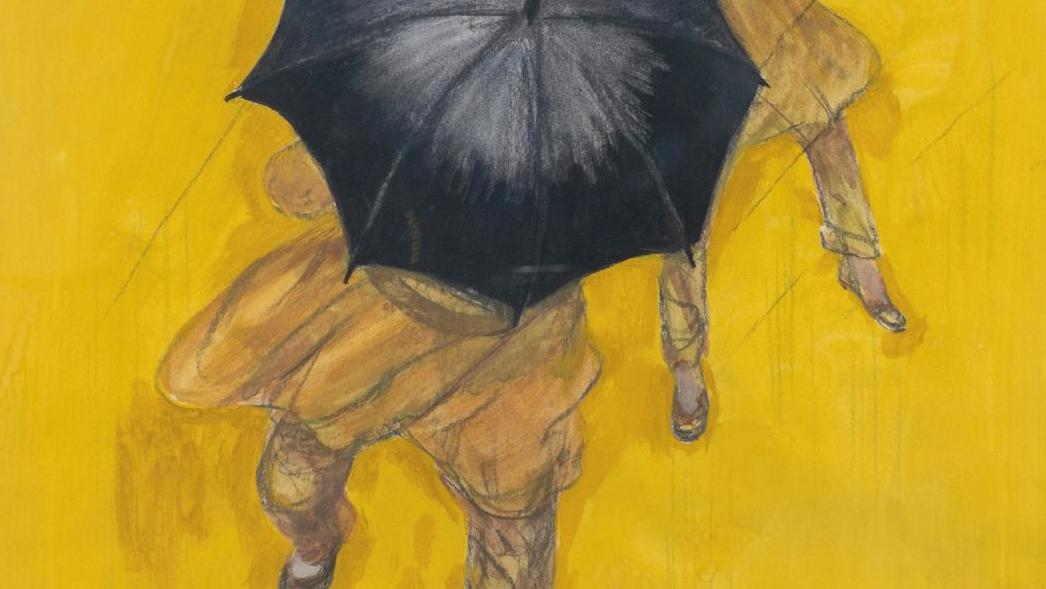5 Shocking Art Thefts in Modern History

If you’ve set foot in any art museum, you’ve noticed security guards surrounding the building and galleries. They’re not just there to make sure visitors don’t get handsy with the artwork; they’re also there to make sure the valued works of art remain inside the museum. Though it may sound like something out of a blockbuster movie, art thefts are, sadly, not all that uncommon. Even more unfortunate is that only five to ten percent of works stolen are ever recovered, leaving the legacy of historically significant works of art to reproductions printed in books.
Part of what brings so much media attention to the theft of famous works of art isn’t just the potential value of the stolen property, but the motivation behind it. While the most obvious reason is the potential fortune made from black market resale, other reasons include political motivations and art fanatics who simply want the work for themselves. Still, there are some who steal for the sheer thrill of it, not unlike the eponymous character in the popular 1999 film The Thomas Crown Affair.
Below discover five of the most shocking, damaging, or culturally devastating art thefts in modern history.
1. Maurizio Cattelan’s ‘America’ (2019)

The 2019 art theft at Blenheim Palace in England caused a stir not only due to the value of the work stolen, but also because of the type of work that was stolen. While some art thefts involve centuries-old paintings, this particular heist involved a sculptural work depicting a toilet. More specifically, it was Italian artist Maurizio Cattelan’s America, a fully-functional toilet made of pure, eighteen-karat gold.
The night after America went on view to the public at Blenheim Palace in the United Kingdom, a group of thieves broke in and removed the heavyweight sculpture from its display. While some believed that the theft was a hoax by Cattelan himself, who is known for pranks, the artist soon confirmed that the burglary was real. Since its disappearance, several men and women have been arrested for questioning in connection to America, but no conclusions have been made on either its whereabouts or the identity of the thieves.
Because of the material of the sculpture, many worry that it has since been melted down and that there is no longer a work of art to recover. Comprised of 227 pounds of pure gold, it was valued at more than $4 million as bullion in 2019, but as an artwork is valued at $6 million. The police and Blenheim Palace Art Foundation are still working to catch the criminals and are hopeful that monetary rewards upwards of $100,000 will help them do so.
2. Serial Thief Stephane Breitwieser (1995–2001)
In 2001, a journalist roaming the grounds of the Richard Wagner Museum in Switzerland noticed a peculiar man surveying the museum. After alerting a nearby guard — who recognized the man from a previous theft — Stephane Breitwieser was arrested. A few months later, Breitwieser confessed to an astonishing series of more than 250 art thefts across Europe between 1995 and 2001. Over the span of that time, he had amassed over $1.4 billion in stolen art.
Breitwieser began stealing at local flea markets as a man in his twenties, and soon moved on to museums when he realized his ability to evade authorities. At one point, he was looting a different museum in France every day. His operation was quite simple: he would walk in, grab a work, and walk out while his girlfriend kept watch. His capture led to serious discussions surrounding security in museums.
As a self-described art connoisseur, Breitwieser didn’t steal for a profit, but for his love of art. Most of the looted art was hidden in his family home at the time of his arrest. Unfortunately, his mother destroyed or disposed of hundreds of paintings and drawings when she learned of his arrest, leading to the permanent loss of many important works. Breitwieser was ultimately sentenced to six years in jail, and since then has been arrested twice more for theft in local museums.
3. The Isabella Stewart Gardner Museum (1990)

One of the most infamous art thefts of all time is also one of the most puzzling — and remains unsolved to this day. In the early morning hours of March 18, 1990, two men disguised as policemen came into the museum, tied up a guard, and stole thirteen masterpieces valued at over $500 million. The heist itself — which remains the single largest property theft in the world — took 81 minutes.
Though the stolen works of art, which included pieces by notable Old Masters such as Rembrandt and Vermeer, were undeniably valuable, authorities were struck by the fact that more high-value works in the museum were left untouched. Additionally, several of the thirteen works of art were cut out of their frames directly. Because of this, authorities believe that it’s likely that the thieves were not knowledgeable about art.
Many leads have been followed in the 30 years since, though not all of them have proven to be useful. It’s believed that investigators have identified the thieves, but by the time they did those responsible had already passed away. Making matters more difficult, the statute of limitations on the burglary expired in 1995. Today, efforts are less focused on identifying the thieves and more on recovering the stolen works of art and returning them to their home in Boston, Massachusetts.
4. Nazi-Looted Art (1933–1945)

One of the most devastating and damaging art thefts took place not just in one location, but across Europe. Between 1933 and the end of World War II, more than twenty percent of the art located in Europe was looted by the then-ruling Nazi Party of Germany. By the orders of Adolf Hitler, who dubbed any art outside of the Old Masters and classical portraits and landscapes as “degenerate,” all modern art in Europe was to be sold or destroyed.
After World War II, the United States government assembled efforts to recover, identify, and return the looted artwork (as portrayed in the 2014 film The Monuments Men). While many works have been recovered over time, thousands remain missing to this day, amounting to billions of dollars in value. The efforts to recover the remaining works are ongoing, and have been bolstered in the last decade by an increasing amount of high-profile cases, and growing awareness and support of restitution efforts.
5. ‘Mona Lisa,’ Stolen from the Louvre Museum (1911)

Italian Renaissance master Leonardo da Vinci’s Mona Lisa has captivated audiences with her enigmatic smile and mysterious identity for centuries. So it’s no surprise to learn that her theft from the the Louvre Museum in 1911 caused a media frenzy. Paris officials were baffled by the disappearance and had little evidence to work off of. At the time, Mona Lisa was valued at $1.5 million.
Believing the theft to be driven by passion, French police began to look at members of the avant garde art community in Paris. Poet and playwright Guillaume Apollinaire, known for his aversion to traditional art, was arrested and questioned, but ultimately released. Artist Pablo Picasso himself was even considered as a suspect, though there was no evidence against him.
Two years passed until the thief, Vincenzo Perugia, was caught and arrested. Perugia had worked at the Louvre for a short time in 1908, so was familiar with the museum. After entering the museum dressed as an employee, he hid overnight and walked out with Mona Lisa under his uniform the next morning.
Perugia’s possession of the stolen painting remained undetected until 1913, when he contacted an art dealer in Florence, Italy. Perugia claimed that he wanted to return Mona Lisa to its rightful place in Italy, the home of its creator. Italians flocked to the Uffizi Gallery to see the painting in its home before it was eventually returned to the Louvre, where it has remained since.










